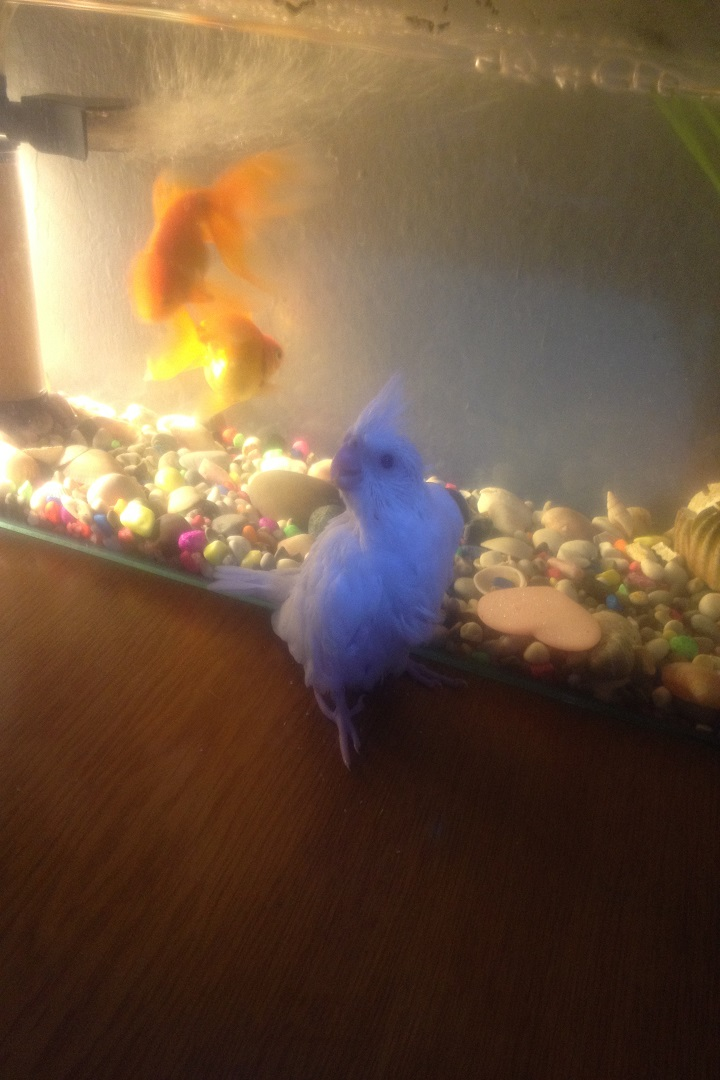
HI everybody today we going to talking about incubating cockatiel eggs In this article We will explain what an incubator is and how to deal with it, so have fun with us .
Artificial incubation
Humans get involved in incubation of eggs for a couple of reasons: Under the artificial conditions of a human-made environment, some pairs of birds are simply not capable of hatching their own eggs. They won’t incubate them, and they may even destroy them, refuse to feed their chicks after they hatch, or kill their young hatchlings.
Humans can use a bird’s own species survival mechanisms to produce more babies than would be normal. Eggs are good eating, which is why many predators love to raid bird nests for eggs (and for young birds, too). A suddenly empty nest triggers a bird to produce another clutch of eggs to replace those that are gone. This procedure, called double-clutching, enables an aviculturist to incubate one set of eggs while the birds incubate the others.
start incubating the eggs
Artificial incubation involves an incubator (a machine that keeps the eggs at optimum temperature and humidity for the species) turning the eggs at regular intervals as the birds themselves would.
The amount of time between when an egg starts to develop and when a chick hatches (the incubation period) depends on the species, just as the gestation period between different species of mammals varies. Budgie eggs, for example, develop for 16 days, cockatiels and lovebirds for 18 days, and larger parrots, such as Amazons, for about 24 days. Other species of parrots may spend as much as days in the shell 34.
Tip. You can tell whether an egg is fertile and developing by a procedure called candling. Shine a bright light — such as a penlight — though the egg from behind. A living, developing egg shows a web of red veins.
Raising babies
The moment a baby starts poking his way out of the shell is when the real fun begins.
The babies of more common pet birds — all parrots, canaries, and other finches — are born with their eyes shut and completely naked, unable to retain heat or moisture without the help of attentive parents — or of humans acting as parents. If you’re going to hand-feed your babies, this is the moment you change from one piece of equipment to another — from the incubator, designed for the warming
and turning of eggs, to the brooder, a place where baby birds (who don’t need turning) are maintained at the proper temperature and humidity for their species as they grow.
The naked babies of common pet bird species are described as antiracial, requiring care and feeding by parents, as opposed to the practical babies of chickens, pheasants, and ostriches, born fully fuzzed, eyes open, and mobile, able to feed themselves almost immediately.
Hand-feeding and socializing
Bird parents feed their young by regurgitating food from their crops (a food storage organ at the base of the neck) directly into the babies’ mouths. Humans aren’t really equipped to barf for baby birds, so we raise them through hand-feeding.
Warning. Hand-feeding is not a learn-as-you-go skill. You need to practice under the watchful eye of an experienced person, working with his help until you can handfeed as naturally as shifting the gears of a car.
Although different methods exist for getting food into baby birds (we recommend using a commercial preparation for complete nutrition), syringes and spoons are perhaps the most common methods among small or hobby breeders. To start out,
you feed hatchlings around the clock, in two-hour intervals. The length of time spent hand-feeding — weeks, even months — and the intervals between feedings depend on the species, and to some extent the individuals themselves.
Remember. Raising several clutches of babies can be stressful and exhausting. These all-too human problems factor into the diseases or even death of babies, especially at the end of a breeding season.
Careful daily record-keeping is as important as proper feeding. You must weigh babies daily and record their weights to ensure that they’re developing normally.
Tip. You need help to learn how to be a good hand-feeder, but if you’ve ever cared for a human baby or successfully bottle-fed a puppy or kitten, you probably have what it takes. The basics of hand-raising are the same with any infant: Keep them warm, keep them clean, and feed them when they’re hungry.
Hand-fed babies need to learn an array of normal behaviors. Many young parrots sold as companions learn only one form of social interactive skills (known as pair-bond enrichment behaviors) from their new owners, as opposed to the typical social skills that would’ve been taught by the parents of their wild counterparts. It’s not uncommon for them to lack knowledge of normal social interactions and,
foraging activities, or to learn inappropriate pair-bonding behaviors. To ensure that they learn those important skills, you need to enrich their environment
(especially the cage), provide positive-reinforcement training to help guide interactive behaviors, and offer foraging opportunities.
Remember. A baby cockatiel bird needs to be socialized to human beings. Talk to your babies. Handle them gently and lovingly. Sing to them, play the radio, and just be with them. Every touch the baby bird feels and every sound he hears is making him more comfortable with people, and that makes him a better future companion.
Raising the bodies of baby birds with good and regular food and raising their minds and hearts with love is a powerful combination.
We hope this article was helpful for you if you have any questions please let us know in the comment below. And think you for reading
subscribe me on youtube
Follow us on pinterest
